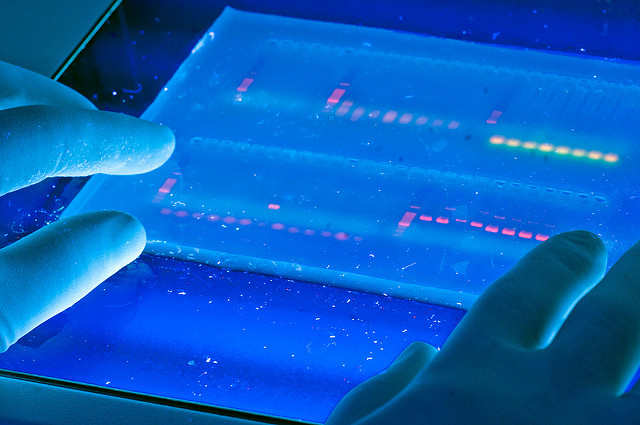University of Michigan School for Environment and Sustainability, Flickr (CC-BY-2.0)
A breakthrough in medical research has allowed a team of scientists to edit the DNA of human embryos to repair a version of a gene that causes cardiomyopathy, a genetic disease resulting in heart failure. While some see this genome editing technology—known as CRISPR—as a remarkable tour de force, others find the practice extremely alarming.
Meanwhile, some middle school students are already practicing genetic engineering in the classroom with inexpensive kits. Geniventure, our dragon genetics game for middle and high school students, also allows students to manipulate genomes, but the DNA in Geniventure is virtual and the species is a mythical creature called a “drake,” the model species for dragons.
Working with drakes and dragons allows us to combine various real-world genes without having to be restricted to the genome of a specific species, a problem that scientists in many countries often run into. We’ve combined real genes from mice, fruit flies, lizards, and other model organisms into the genome of our fantastical creatures. Students thus experience many of the same real genes that scientists around the world are also studying. Importantly, using dragons also allows teachers to talk about ethical issues, including the implications associated with modifying DNA.
CRISPR incites fears of designer babies—the idea that parents will someday want to choose particular traits for their unborn children. In Geniventure, students do “design” drakes in challenges that require them to change alleles to match a target. Teachers guiding students through these challenges have an opportunity to discuss the notion of modifying an organism’s genes for a particular purpose. They can pose questions to get students thinking about the ethical implications of gene editing: Are there circumstances where you wouldn’t want to edit a drake’s genes? What might happen if you changed the wrong gene and you couldn’t change it back? What effect would that have on the drake’s future offspring?

“Designing” drakes. Geniventure tasks students with manipulating drake genes by selecting alleles from pull-down menus in order to match a target drake.
It’s easier to discuss these issues when we are talking about drakes and dragons because humans aren’t anything like these fictitious creatures. But since the genes are modeled after real genes (e.g., the the albino gene is modeled after skin color in humans), we can translate conversations about dragons to similar debates by scientists and regulatory officials about human gene editing. In Geniventure, students change an albino drake’s genes from producing a broken enzyme so that it can create a functional protein and generate a drake with color distributed throughout its scales. Albinism is also an inherited genetic condition in humans, so there is a significant parallel that could bridge the conversation.
Scientists are using CRISPR to investigate the prevention of inherited diseases like Huntington’s disease, cystic fibrosis, and even some cancers, though there is opposition and concern over this technology. One major fear is the safety to a developing embryo. DNA that’s been modified in an embryo would be passed down for generations, which raises concerns that any mutations as a result of the gene editing could cause new diseases and become a permanent part of that family’s genetic blueprint. Geniventure enables students and teachers to start discussions about these important topics.
